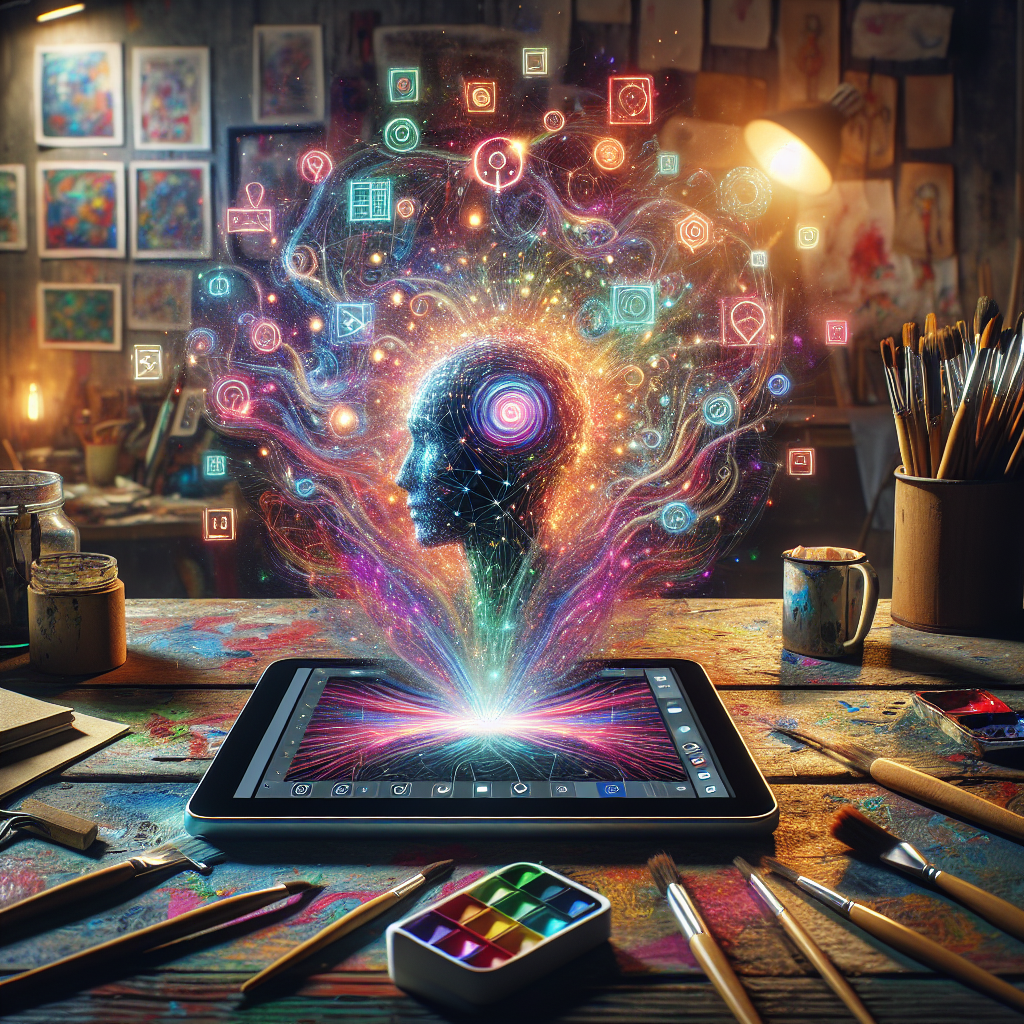In recent years, artificial intelligence (AI) has emerged as a transformative force across various sectors, including art and design. With advanced AI applications, artists, designers, and creators are experiencing a revolution that fosters creativity, streamlines workflows, and inspires innovative forms of expression. This article delves into how AI applications are reshaping the landscape of art and design, empowering creators to push their limits and explore new frontiers.
The Fusion of Art and Technology
Historically, technology has played a significant role in the progression of art. From the invention of the camera to digital painting tools, every advancement has influenced artistic expression. Today, AI is at the forefront of this evolution. By analyzing vast amounts of data and generating original outputs, AI tools offer artists unprecedented opportunities to experiment with their work.
Boosting Creativity
AI-driven creativity tools like DALL-E, Midjourney, and DeepArt utilize sophisticated algorithms to create artwork based on user input. These platforms enable artists to provide concepts, themes, or keywords, generating images that can inspire new directions in their creative processes. For example, a graphic designer could input keywords related to a brand’s ethos and receive multiple design iterations, each with its unique aesthetic.
Furthermore, AI can help artists overcome creative blocks. When facing obstacles, these applications act as a springboard, presenting alternative perspectives and ideas that spark imagination. The synergy between human creativity and AI efficiency cultivates a collaborative environment that encourages artistic exploration.
Optimizing Design Workflows
In the rapidly evolving world of design, efficiency is crucial. AI tools automate repetitive tasks, allowing designers to concentrate on the creative aspects of their projects. Programs like Canva and Adobe Sensei leverage AI to enhance workflows, providing suggestions for layouts, colors, and typography that align with the user’s vision. This not only saves time but also boosts productivity, enabling designers to produce high-quality work more swiftly.
Additionally, AI excels at analyzing design trends. By scrutinizing data from millions of online sources, AI identifies emerging styles and preferences, helping designers stay ahead of the curve. This data-driven methodology ensures products resonate with target audiences, maximizing their impact.
Personalization and Tailoring
One of the most intriguing aspects of AI in art and design is its capacity to offer personalized and customized experiences. AI-driven platforms like RunwayML empower users to generate unique artworks tailored to their preferences. For businesses, this translates into the ability to provide customers with personalized products, ranging from custom-illustrated merchandise to bespoke digital art.
Moreover, AI can modify designs based on user interactions. For instance, websites might utilize AI to adjust visual content in response to user behavior or preferences, fostering a more engaging and relevant experience. This degree of personalization enhances user satisfaction, bridging the gap between creators and their audiences.
Ethical Implications
While the advantages of AI in art and design are clear, the rise of these technologies also prompts significant ethical considerations. Issues surrounding copyright, originality, and the potential for AI-generated works to overshadow human creativity must be scrutinized. As AI continues to develop, the art community needs to engage in discussions about intellectual property rights and the role of AI in creative sectors.
The Horizon of Art and Design
The integration of AI into art and design signals not just a trend, but a fundamental shift. As technology advances, we can expect even more sophisticated tools that allow artists to create immersive, interactive, and multi-dimensional works. The combination of virtual reality, augmented reality, and AI is poised to redefine creative boundaries, leading to new art forms that engage audiences in unprecedented ways.
Conclusion
AI applications are revolutionizing the realm of art and design, providing tools that enhance creativity, improve efficiency, and establish personal connections between creators and their audiences. As artists and designers leverage the potential of AI, they are not diminishing their creativity, but rather expanding it, embarking on imaginative journeys that push the limits of what art can achieve. In this new era, the collaboration between human intuition and artificial intelligence promises to unlock limitless possibilities, paving the way for a future rich in innovation and inspiration.

